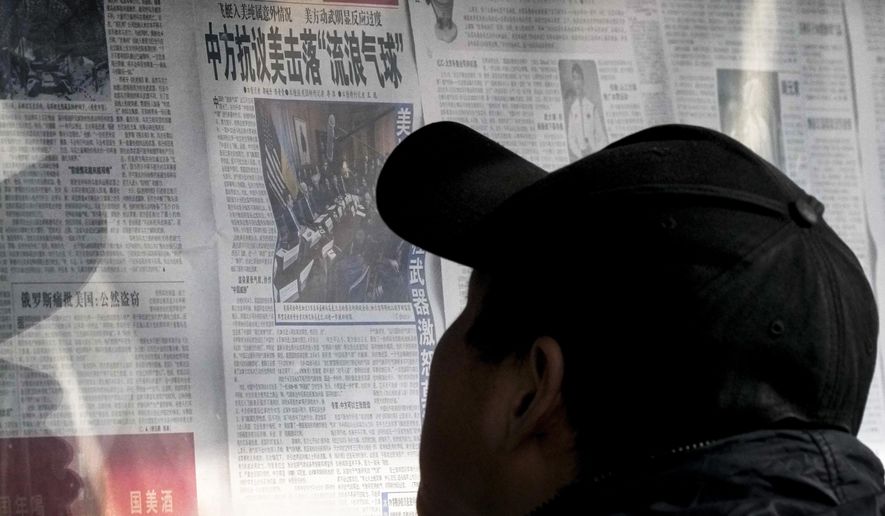SEOUL — Amid the storm of hot air surrounding the U.S. downing of a Chinese surveillance balloon Saturday, a similar incursion reportedly took place in South Korea, concluding with far less drama.
Citing unnamed official sources, South Korean press outlets reported Monday that a North Korean balloon, roughly two yards in diameter, had crossed the tense DMZ and was spotted inside South Korea on Sunday.
But unlike in the U.S., Seoul’s military did not scramble to confront the craft during the brief intrusion, which lasted “hours.”
It is unclear whether the balloon was of civil or military origin, nor at what height it was floating. But it comes on the heels of an earlier incursion by Pyongyang that did cause significant embarrassment for senior South Korean military officials, when five North Korean drones crossed the DMZ and hovered in the air space over key targets in Seoul on Dec. 26.
During that incursion, air traffic was suspended at Seoul’s two commercial airports, Gimpo and Incheon, and one drone loitered over a Seoul compound that is home to the presidency and the Ministry of National Defense, as well as a small U.S. Army presence.
Seoul’s embarrassment was compounded when a light attack aircraft, scrambled to intercept the drones, crashed upon takeoff. No one was hurt in the crash.
SEE ALSO: Defense officials report previous balloon sightings to Congress
While no further drone intrusions have been registered, balloon launches have been serious business in the war of nerves on the tense, divided Korean peninsula. But most of the provocative traffic in the past has been going in the other direction.
South Korean balloons, released by anti-North Korean activists with messages attached that assail the Kim Jong-un regime, have, for years, infuriated Pyongyang and also irked South Korean liberals. In 2020, the liberal Moon Jae-in government, citing national security, made the practice of dispatching balloons to the North illegal.
Meanwhile, North Korea is proving surprisingly silent so far in 2023. After a record year of missile launches in 2022, there have been no tests since Jan. 1, though rumors of an upcoming military parade are rising. Such parades offer outside observers a rare look at the latest output from North Korea’s armorers.
• Andrew Salmon can be reached at asalmon@washingtontimes.com.




Please read our comment policy before commenting.